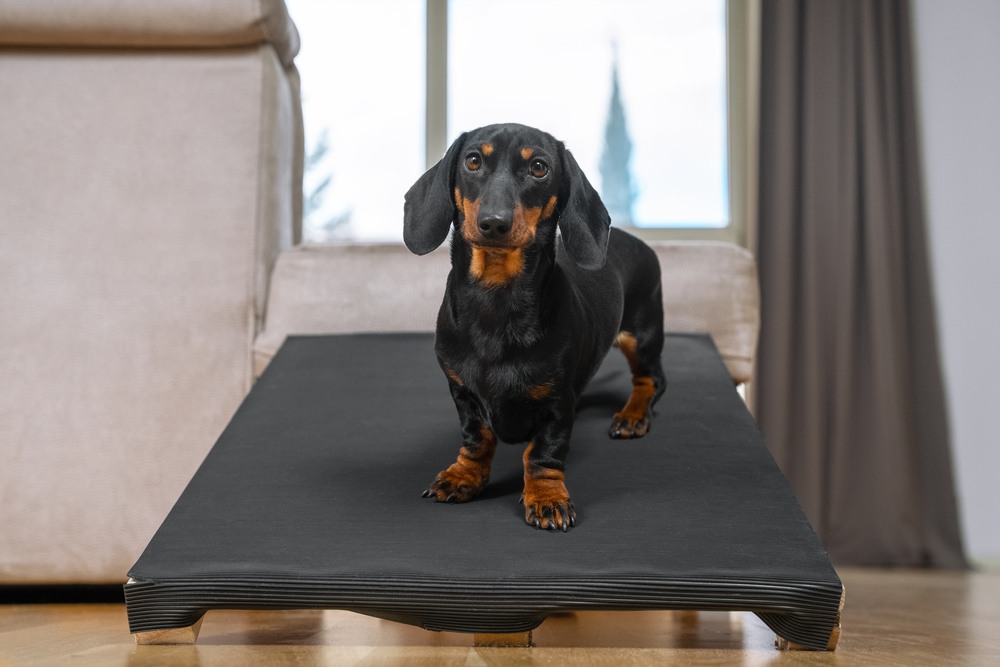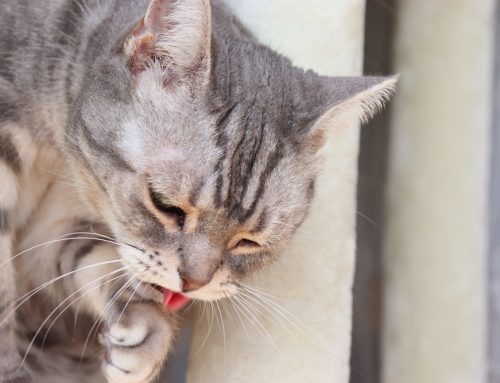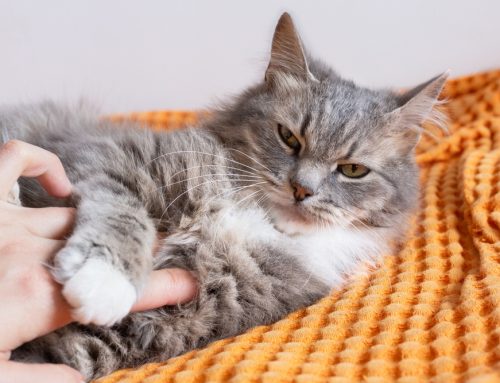Intervertebral disc disease (IVDD) is a common and challenging condition that can severely and negatively impact a pet’s quality of life. Learn why disc disease is such a pain in the neck—and back—with this guide from Tidmore Veterinary Hospital.
Intervertebral disc disease in pets
IVDD is a degenerative neurological condition that affects small and large dogs and, less commonly, cats. Pets with IVDD experience spinal cord compression that can range from mild to severe, with corresponding weakness, pain, and nerve damage. IVDD signs can range from mild back pain to partial or complete paralysis.
Your pet’s vertebral column
Your pet’s spinal cord is protected and surrounded by a chain of bony vertebrae that begin at the neck’s base and extend through the tail. Each vertebral junction, except the first cervical vertebrae (i.e., C1 and C2), includes a cushion-like disc that acts as a shock absorber and prevents bone-on-bone contact when the spine bends, extends, or twists. Each disc is composed of two layers—a tough collagen-fiber outer layer (i.e., the annulus) and a softer center (i.e., nucleus pulposus)—which are often compared to a jelly doughnut.
Disc herniation in pets
Unfortunately, these helpful discs can naturally wear and tear, deteriorate, form a trauma-related hernia, or rupture, and the disc material can press up into the fragile spinal cord, causing a spinal compression (i.e., narrowing). This puts pressure on vital nerves and damages the critical brain-to-specific-body-areas communication. Disc herniation is classified according to rupture type, with classifications that include:
- Hansen type 1 — This degenerative form is most common in small dogs and occurs when the soft disc center becomes hardened and inflexible. Spontaneously, the rigid material will tear the fibrous outer layer, and the formerly soft inner contents are expelled—sometimes forcefully.
- Hansen type 2 — This form, which is most often diagnosed in middle-aged large-breed dogs, more closely resembles human disc herniation, where the outer layer protrudes, or bulges, into the spinal column and creates pressure on the cord.
- Hansen type 3 — Informally referred to as a “missile disc,” this non-compressive injury occurs when disc contents are ejected at high velocity but low volume. Although the initial effects are dramatic, they do not cause permanent spinal cord damage.
Type 3 disc herniation can often be linked to a sudden traumatic event or action, but generally disc degeneration is a gradual process that may progress with no signs until seemingly acute disc material herniation occurs and the pet becomes painful or paralyzed.
IVDD risk factors for pets
Knowing your pet’s susceptibility to IVDD can help you reduce the likelihood for severe injury. Known risk factors include:
- Long-backed dogs (e.g., dachshunds, Basset hounds, poodles, German shepherd dogs)
- Chondrodystrophic breeds (i.e., those with short, curved limbs, including dachshunds, Basset hounds, shih tzus, beagles, Pekingese)
- Obesity
- Senior pets
- A family history of IVDD
- High-impact activity (e.g., agility, disc flying, dock diving)
IVDD signs in pets
Some compressions are mild, but severely affected pets require emergency veterinary surgery to preserve and restore their mobility. Signs will vary based on the affected area (e.g., neck, mid-back, lower back), but recognizing your pet’s condition as soon as possible is important to alleviate pain and ensure a successful recovery. Common signs include:
- Altered posture
- Stiff or slow movements
- Shaking
- Back pain (i.e., flinching, muscle spasm, crying out when touched)
- Wobbly or unsteady walking
- Knuckling over (i.e., inability to position feet toes-down when standing or walking)
- Dragging one or more limbs
- Urinary or fecal incontinence
- Inability or refusing to move
If your pet is dragging their limbs or appears paralyzed, immediately contact Tidmore Veterinary Hospital or the nearest emergency veterinary service for after-hours care. Once a pet reaches this stage, surgical correction can successfully restore mobility and pain sensation only within a narrow window of time.
IVDD diagnosis and prognosis in pets
When pets present with IVDD signs, our veterinarians perform a complete neurological examination in addition to the standard physical assessment. The neurological examination includes an evaluation of your pet’s reflexes, as well as their posture, gait, and mental status, which allows the veterinarian to localize the injured area (e.g., cervical vertebrae versus thoracic or lumbar vertebrae), depending on the reflexes that are altered or absent. Although X-ray imaging can be helpful, advanced diagnostics (i.e., magnetic resonance imaging [MRI], computed tomography [CT]) provide more accurate and precise results.
Timely diagnosis and treatment can improve your pet’s prognosis, although IVDD is a degenerative, chronic condition, and flare-ups, relapse, and new herniations are common.
IVDD treatment for pets
Treatment can vary greatly, based on the pet’s condition. Surgical correction is necessary to remove disc material and alleviate compression in paralyzed, painful, or severely compromised pets. Physical rehabilitation, including range of motion and balance exercises, and underwater treadmill therapy, can aid post-surgical recovery.
Non-surgical or conservative treatment is advised for dogs and cats whose neurological evaluation is normal, and typically includes prolonged cage rest to prevent disc rupture, anti-inflammatory medication, muscle relaxers, and a slow return to modified activities after veterinary approval. Herbal medicine and other non-traditional therapies, including acupuncture or laser therapy, may be recommended for pain management.
IVDD management for pets

Because recurrence is common, lifestyle modification is recommended for pets with IVDD. This includes:
- Lifting your pet or using a pet ramp to prevent your pet from jumping up or down from heights
- Keeping your pet active and strong with low-impact exercise
- Maintaining your pet’s healthy body weight
- Promoting core muscle strength with veterinary rehabilitation
- Visiting Tidmore Veterinary Hospital at the first back pain sign
IVDD can be a frightening diagnosis, but affected pets can still enjoy a long and happy life with appropriate care and management. If you suspect your pet is suffering from back pain, take action—contact Tidmore Veterinary Hospital to schedule an appointment as soon as possible.








Leave A Comment